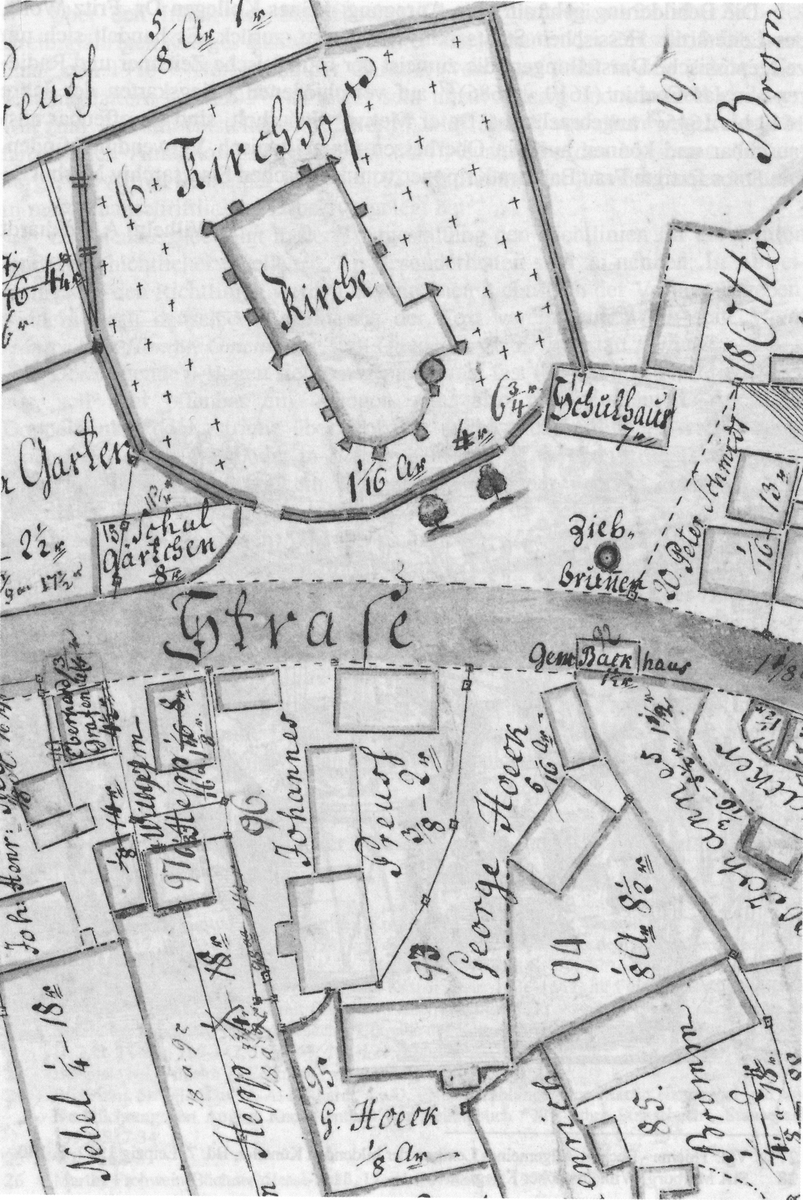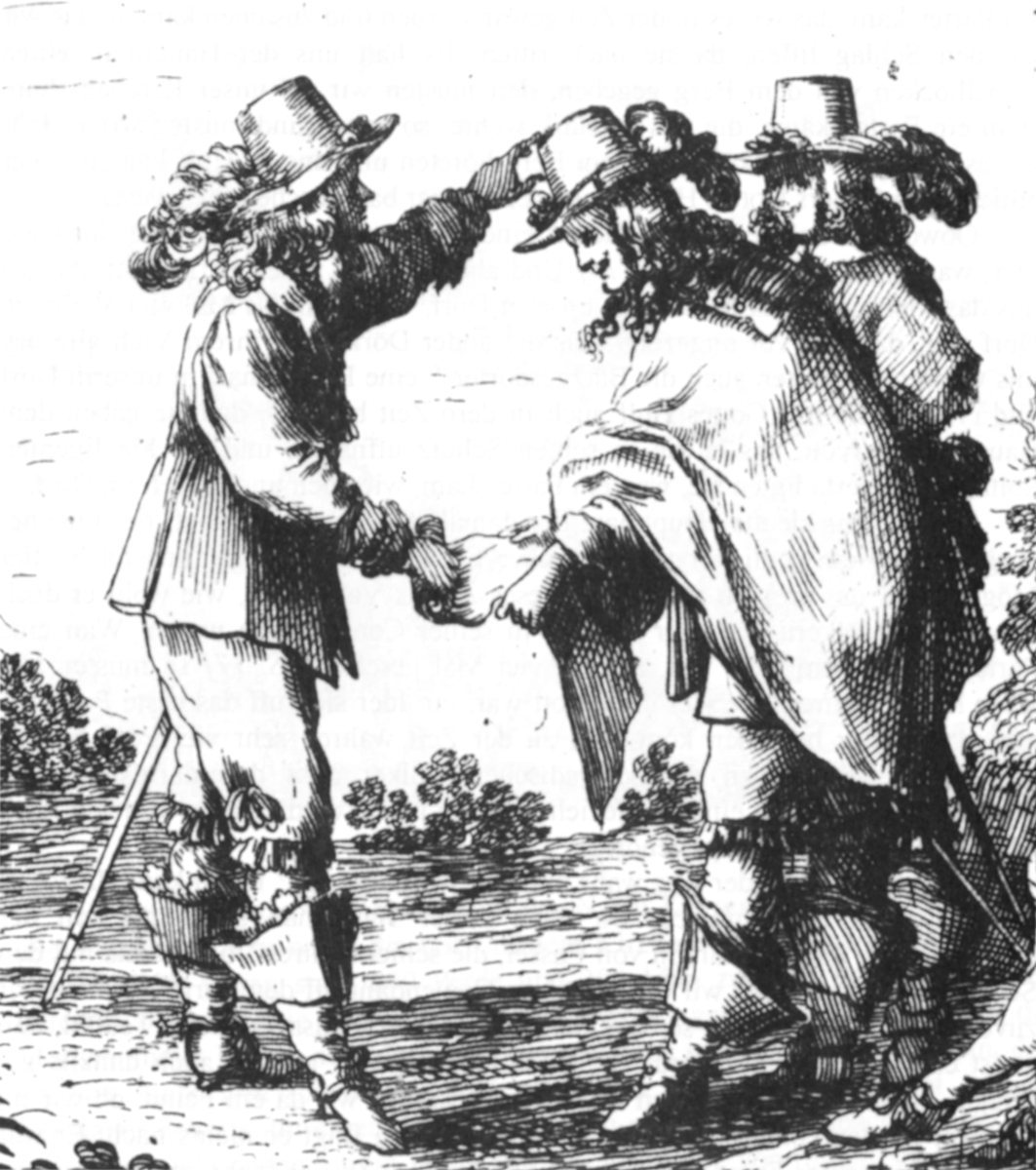Peasant Chronicle from the Thirty Years War (1636–1638/39)
Abstract
The peasant Caspar Preis (1636–1667) composed an account of his experiences during the Thirty Years War. His personal testimonial examines the war from the perspective of the so-called “common people.” Although Preis identified with this group, he was in many ways extraordinary: he was able to write, and he served as the mayor of the village of Stausebach, where he also played a key role in the religious community. Composed in retrospect, Preis’s text focuses on flight, destruction, and the rebuilding of the local village community, the last of which was a priority in wartime situations. Destruction, suffering, and the stresses of war are also described in the text, whereby it is clear that the affected community was not the larger one of “fatherland” but rather the local one of the village.
Source

Stausebach Chronicle
This book records what happened to me, Caspar Preis, and my wife in the time we lived there. I, Caspar Preis, [was] born in Leidenhofen, my wife Gertraud in Wittelsberg. We spent some time painfully in the bloody war as follows below, started in 1636 in Stause(bach).
[1636]
On St. Peter’s Day in 1636, I, Caspar Preis, and Gertraud, my wife, moved from Schrickt [Schröck] to St. Michaelshof in Stausebach, which pays rent to the church treasury in Kirchhain. Before, we lived for fourteen years in Schrickt, by the grace of God. We bought this farm from Hans Kramer, otherwise called Grohans, and his wife Rebecka, for seven hundred guilders. The farm had been so ravaged and ruined in the war that not a handful of grain was expected. There were no rooves on the buildings and neither gate nor doors on them, and not a single fence around the garden. All in all, everything [had been] completely ravaged and ruined in the bloody war, for it was then a bad and very sad time because of the war in the land. At that time, in 1636, the Hessians and Swedes marched to Hanau on the Main and sought to take provisions and terrorize it, which they then proceeded to do. Hanau reported little about the bloody war according to my peasant understanding or from what I saw with my own eyes or painfully learned from deeds.
The Imperial princes and then the Imperial cities fell out with His Imperial Majesty and made a stand against him, seeking help and assistance against the Emperor and his supporters from a Swedish king with many soldiers. And they marched into the countries that sided with His Imperial Majesty. They occupied the countries and despoiled and plundered them at will. Then a great punishment was sent across Germany by God because of our sins, and it quickly went well for them. The entire world ran to [support] Sweden and wanted to expel the Emperor and everyone who sided with him. Our Honorable Lord, the Elector, was on the Emperor’s side and we, his poor subjects, had to suffer hurtfully, for the Landgrave from Kassel sided with Sweden and both his lands and his fortress of Ziegenhain were far too close to us poor people. They caused us heartbreak, as you, pious Christian heart, will indeed still hear.
A person might ponder and even ask why I did not remain in Schrickt, because the farm and property were so ravaged and ruined. I will tell you why, etc. In Schrickt I had no reason that forced me to [leave], but I had significant debts on my property, although I had rather good property at Schrickt and I could well keep a farmhand and maid there. It is no lie but entirely true that the yield of produce on my property in 1632 was more than sixty Fuder [cartloads] of grain, eleven Fuder of wheat, and many good summer fruits. I moved to Stausebach because I wanted to get rid of my debts. The farm at Stausebach was even a famous farm, and Grohans was the brother of my father-in-law and did not want to let a stranger come in. Thus, a number of people advised me to buy the property, take possession of it, and not let a stranger in. Therefore, I sold [my land] in Schrickt and bought the farm in Stausebach. The war had been going on a long time in the country when I moved to Stausebach. And at that point in time, it was quiet here in this land, and the rumor was generally that there would be peace. But that was perhaps not yet our Lord God’s will.
In the above-mentioned year not a single Sichelung [scythe-cut handful] of grain came into the village, for everything was scythed and used up as fodder by the soldiers when they marched to Hanau and returned, for four cavalry regiments bivouacked in the village of Stausebach for six days and nights. It was a sad time at that point. No people dared show their faces, for there was little respect there for any person. When they met a person, it was a miracle if he came away with his life. The people had to stay in the villages whenever they could or would. Oh, how many wives and virgins were raped, how many people lost their lives! In those times, all the cattle were driven off to Hesse, which only happened in the Darmstadt area or in the Amöneberg district. Before that, the bells were stolen from the churches by the Hessians. They rooted around in the churches like wild pigs, and if they could have carried away the churches, too, the latter would not have remained standing before them.
[1637]
In 1637, this village was plundered seven times by Ziegenhain soldiers, and each time not the slightest thing could or would remain in their path. At that time the livestock remaining in Stausebach consisted of not more than five cows and three chickens; in Kirchhain there was not a single hen or rooster. No person could show his face, because they took the people captive and dragged them off to Ziegenhain. There they had to be ransomed and had to give [their captors] money. It was a time of misery, hardship, and heartbreak among the poor in this district. We poor people had to endure terrible torment from the Hessians. The land lay uncultivated; the barns and all the stalls stood empty. At that point important crops were very expensive. A Mütt [approximately a bushel] of grain cost six Reichsthaler; of wheat, eight Thaler; of peas, eight Thaler; of oats, two Thaler; a small loaf of bread, one Kopfstück [coin of highly variable worth]. However, these high prices did not last a half year. Then they got better again and rather reasonable.
In that year, that is, 1637, I still had two cows, which I had kept with God’s help. But I could not keep them in Stausebach, only in Kirchhain. So we had to take the fodder there that year and went with the city’s livestock to the meadow, because Darmstadt at that point had a truce with the Swedes and Hessians, so we could stay in Kirchhain.
[1638–39]
After that, a truce was reached in 1638 with the Swedes and the Imperial forces; we each began to cultivate our property, but it went very slowly because everyone had to start anew. In 1638 and 1639, and even into 1640 there was a truce for a while, then at another point hostilities again. It went on like that in confusion. We still tilled then some in the meantime so that we had a little basic sustenance, but the heavy contributions continued.
[…]

[…]
Source: Wilhelm A. Eckhardt and Helmut Klingelhöfer, eds., Bauernleben im Zeitalter des Dreißigjährigen Krieges. Die Stausebacher Chronik des Caspar Preis 1636–1667, with an introduction by Gerhard Menk, Beiträge zur Hessischen Geschichte, 13, Marburg an der Lahn: Verlag Trautvetter & Fischer, 1998, pp. 35–39. Republished with permission. Illustration 1 (Map): HStAM Best. Karten Nr. B 641; Titel: „Gemarkungskarten Stausebach“, Laufzeit: 1810, Originaltitel: „Gemarkungskarten A-E“, Urheber: Johann George Seng; Illustration 2 (Landsknechte): HStAM Best. WHK Nr. WHK 3/93; Serientitel: „Dreißigjähriger Krieg bis Pyrenäischer Frieden von 1620-1659“, Titel: „Plan von Ypern in Flandern, belagert durch die Franzosen unter dem Prinzen de Condé, 13. bis 29. Mai 1648“, Laufzeit: (1648) 1698, Urheber: Sr. de Beaulieu, Ingenieur ordinaire.
Further Reading
Johannes Burkhardt, Der Dreißigjährige Krieg. Frankfurt am Main: Suhrkamp, 1992.
Benigna von Krusenstjern and Hans Medick, eds., Zwischen Alltag und Katastrophe. Der Dreißigjährige Krieg aus der Nähe. Göttingen: Vandenhoeck und Ruprecht, 2001.
Markus Meumann and Dirk Niefanger, eds., Ein Schauplatz herber Angst. Wahrnehmung und Darstellung von Gewalt im 17. Jahrhundert. Göttingen: Wallstein, 1997.
Herfried Münkler, Der Dreißigjährige Krieg. Europäische Katastrophe, deutsches Trauma 1618–1648. Berlin: Rowohlt, 2017.
Georg Schmidt, Der Dreißigjährige Krieg. 6th edition. Munich: C. H. Beck Verlag, 2003.
Peter H. Wilson, The Thirty Years War: A European Tragedy. Cambridge, MA: Harvard University Press, 2011.